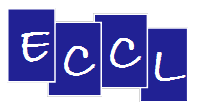AbstractThe ability to understand, manipulate and control chemical reactions at the molecular level is one of the great challenges of modern research. Since chemical processes are dominant in most areas of science and technology, the ability to control their pathways provides exciting new opportunities that may be exploited by both the research and technological communities. Such ‘single molecule engineering’ requires selective bond cleavage in target molecules to allow subsequent management of the local site chemistry. In electron beam experiments it is well established that low energy electrons offer this selectivity with high efficiency, a selectivity that is controllable by simply ‘tuning’ the electron energy. Recently, low energy electrons derived from the tip of a scanning tunnelling microscope have also been used to control bond rupture and subsequent linkage of individual molecules to the substrate. This Action aims at an interdisciplinary European programme to combine state-of-the-art in electron induced chemistry and surface science with these recent advances in scanning tunnel microscopy to pioneer a new field of ‘Electron Controlled Chemical Lithography’, with the prospect of designer synthesis down to the nanoscale and electron controlled manipulation of surface properties with spatial resolution ranging from the millimetre down to the nanometre scale KeywordsElectron controlled chemistry, molecular engineering, low energy electron interactions, scanning tunnel microscopy, inelastic electron tunnelling spectroscopy.
|
Last updated: 28th September 2007


